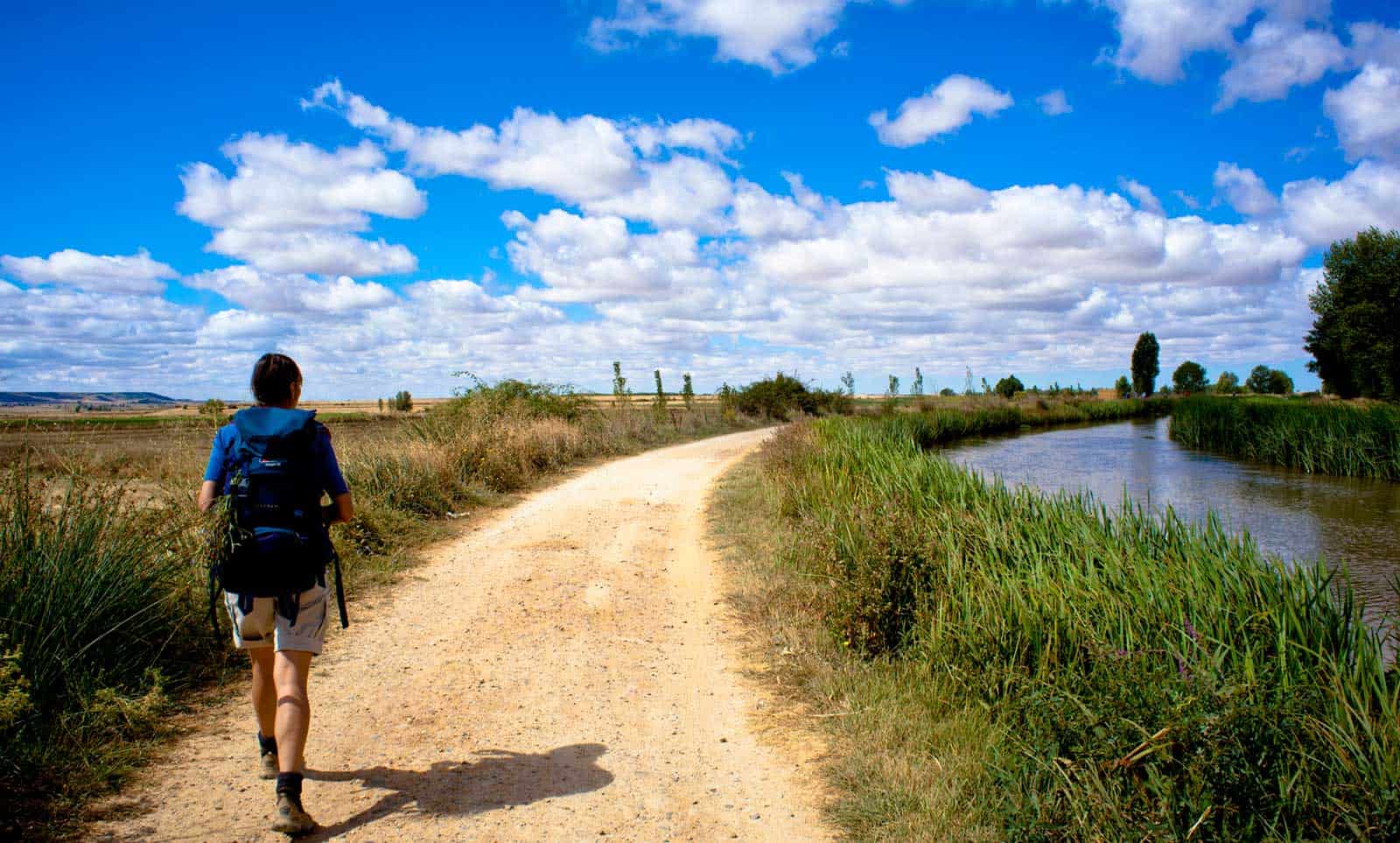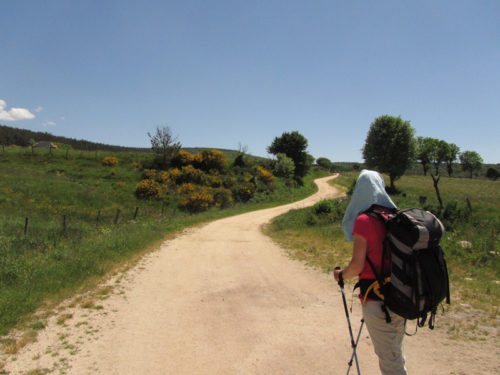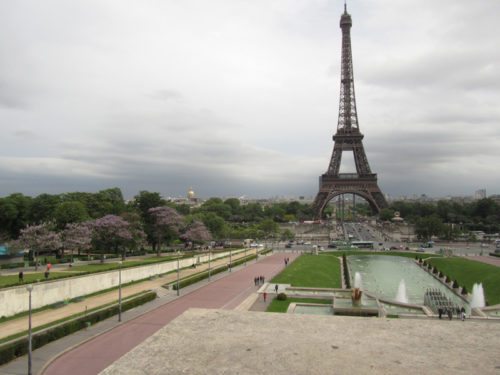I walked the Camino de Santiago on the Camino Frances for less than €1,000, around $1,200. This does not include travel to and from the start and end.
The main costs for any of the Camino de Santiago routes are your daily budget which can be between €30 and €50. Getting to and from your start and finish points is completely dependent on where you live.
If you live in Europe, it is reasonably quick and easy to get to and from any of the Camino routes. If you live in North America, you will obviously have a longer and more expensive flight. (see travel page here).
One of the biggest variables is the current exchange rate between the US Dollar, Sterling, and Euro. Right now, walking the Camino is cheaper than it has ever been for pilgrims from America and Britain.
Day to Day Costs While Walking
The most popular Camino routes are the Camino Frances and the Portuguese Camino. Both of these routes have good infrastructures for pilgrims. One of the most important costs is the decision to stay in hostels, hotels, or pensions. Hostels and albergues are the cheapest, friendliest, and best places to stay. You will have the added advantage of meeting, talking, and getting to know other pilgrims. A quick note on the hostels: most of the hostels you see in Camino guidebooks are only for pilgrims.
Day to day living can be very reasonable – but, I know of people that stayed in hotels all along the route. I have met one man who stayed in every Parador he could. I usually stayed in Albergues, but for two nights I stayed in a pension, (bed and breakfast). The pension cost about €20, (budget €30 for small towns and villages, €50 min for larger towns and cities). I stayed in a single room each time and it was fairly cheap. In small towns and villages, the cost is much less than in major cities. Expect to pay a lot more in Santiago or any of the major cities where it is about double this for a low-end hotel.
- Albergue each night – 10 to 17 euro
- Evening Meal – 10 to 15 Euro for the pilgrim menu
I would start each morning in a cafe having breakfast, about €3 including coffee. During the rest of the day, I would spend about €4 on coffee, tea, cold drinks, and ice cream. Lunch I would buy and make myself: cold meats, cheese, bread, and fruits, about €3. Sometimes I would eat in the Albergue in the evening, cooking with other pilgrims. At other times I would eat the pilgrim menu in local restaurants. In all the large cities I spent much more money. I treated myself to great food costing between €20 and €30. There are also some great seafood restaurants along the route and in Santiago de Compostela.
Total Camino de Santiago Costs per Day
35 Euro, about $38 or £28
Hostel: 12, Evening Meal: 12, Breakfast: 3, Lunch: 3, sundries: 5 – note no beer money included here. (My words of warning: my budget for any trip has never been under my plan it has always been over)
You can walk the whole route, 31 days, for less than €1,000. But, I would budget for another few hundred if possible, if unexpected things happen.
My daily costs in 2005 were between €20-30 and I spent less than €800 in total. In 2012 walking the Le Puy route in France I spent about €50 per day. (I had more money which resulted in me spending more). I always made sure that I always had extra money for emergencies (never used or needed). My bank cards worked fine in all the Spanish bank machines and the same for my credit card.
How much did you spend per day on the Camino was a thread and poll on the forum,(now closed). Most pilgrims will spend between €20 and €30 per day, and it is very closely followed by those who spent between €30 and €40.
The Cost of Food on the Camino de Santiago
The cost of food along the Camino de Santiago can vary depending on several factors, including the specific route you take, the time of year, and your personal preferences. Here are some general guidelines to help you estimate the cost of food during your journey:
- Breakfast: A typical breakfast at a café or bar along the Camino can cost between 3 to 6 Euros. This usually includes coffee, juice, and a pastry or toast.
- Lunch: Pilgrims often opt for a packed lunch or a light meal at a café or bar during the day. Expect to spend between 5 to 10 Euros for lunch, which might include a sandwich, a salad, or a small portion of a hot dish.
- Dinner: In the evening, many establishments offer a “Pilgrim’s Menu” or “Menu del Peregrino,” which is a set menu including a starter, main course, dessert, and sometimes a drink. The cost of this menu ranges from 10 to 15 Euros. If you prefer to order à la carte, prices can vary widely depending on the restaurant, but expect to spend between 15 to 30 Euros or more.
- Snacks and additional items: Budget for extra expenses such as snacks, bottled water, soft drinks, or alcoholic beverages. These can range from 1 to 5 Euros per item.
Keep in mind that these are approximate figures and can vary depending on the region, the type of establishment, and your personal preferences. If you’re looking to save money, consider shopping at local grocery stores and preparing your meals or carrying snacks with you. On the other hand, if you want to indulge in the local cuisine and try a variety of dishes, you may want to budget a bit more for food expenses.
Cost of Accommodation on the Camino de Santiago
The cost of accommodations on the Camino de Santiago varies depending on the type, the specific route, and the time of year. Here is a general overview of the different types of accommodations and their estimated costs:
- Albergues (Pilgrim Hostels): These are the most common and budget-friendly accommodations along the Camino. They provide dormitory-style lodging with shared rooms and facilities. The cost ranges from 5 to 15 Euros per night, with some albergues operating on a donation basis.
- Municipal Hostels: Similar to albergues, these hostels are often run by local municipalities and offer basic, dormitory-style accommodations. Prices are typically between 5 and 15 Euros per night.
- Private Hostels: These are privately-run hostels offering dormitory-style rooms or sometimes private rooms. They may have additional amenities compared to albergues and municipal hostels. The cost for a dormitory bed ranges from 12 to 20 Euros per night, while private rooms can cost between 25 and 60 Euros per night.
- Guesthouses (Pensiones) and B&Bs (Casas Rurales): These accommodations offer private rooms, sometimes with en-suite bathrooms, and often include breakfast. Prices for a double room typically range from 40 to 80 Euros per night.
- Hotels: Hotels along the Camino can vary from budget to luxury, with a wide range of prices. A budget hotel may cost between 40 and 80 Euros per night for a double room, while mid-range hotels can range from 80 to 150 Euros. Luxury hotels can cost upwards of 150 Euros per night.
- Camping: Some pilgrims choose to camp along the Camino, either in designated campsites or informal camping areas. Campsite fees can range from 5 to 15 Euros per person per night. Wild camping is generally not recommended and may be prohibited in some areas.
Keep in mind that these prices are approximate and can vary depending on the specific location, time of year, and availability. Booking ahead during peak seasons (summer months) is advisable to secure your preferred accommodation. However, for albergues and municipal hostels, reservations are often not possible, and beds are allocated on a first-come, first-served basis.
Camino de Santiago Money Saving Tips
Traveling the Camino de Santiago on a budget is entirely possible with some planning and resourcefulness. Here are some money-saving tips to help you reduce costs while still enjoying your pilgrimage:
- Accommodation: Opt for albergues (pilgrim hostels) or municipal hostels, which are usually the most affordable options, with prices ranging from 5 to 15 Euros per night. Some even operate on a donation basis. Be aware that these accommodations tend to fill up quickly, so arrive early or plan your stops accordingly.
- Food: Prepare your meals by shopping at local grocery stores and markets. This will allow you to save on dining out and also give you the opportunity to try local produce. Carry snacks and a reusable water bottle to avoid spending on packaged snacks and beverages.
- Plan ahead: Research the route, accommodations, and attractions before your trip. Knowing your options will help you make informed decisions and avoid overspending on unnecessary services.
- Travel off-season: The Camino is busiest during the summer months, which can lead to higher prices for accommodations and services. Travel during the shoulder seasons (spring or fall) to enjoy more affordable prices and a less crowded experience.
- Walk or bike: The most authentic and cost-effective way to experience the Camino de Santiago is by walking or biking. Public transportation can add up, so avoid it as much as possible.
- Pack light: Carrying a heavy backpack can lead to fatigue and the need for additional transportation or medical services. Pack only the essentials to keep your load light and avoid extra costs.
- Group up: If you’re traveling with friends or meet other pilgrims along the way, consider sharing costs for accommodations, meals, and transportation.
- Limit souvenirs: Souvenirs can be expensive and add weight to your pack. Opt for meaningful, lightweight souvenirs, such as a pilgrim’s shell or a stamped credential as a memento of your journey.
- Use a credential: Obtain a pilgrim’s credential or “pilgrim’s passport” before your trip. This document allows you access to pilgrim-specific services, often at a reduced cost. (e.g. entrance to museums)
- Be mindful of your spending: Keep track of your daily expenses and set a daily budget to help you stay on track financially.
By following these tips, you can minimize costs while still enjoying a meaningful and memorable Camino de Santiago experience.
Cost of Gear for the Camino de Santiago
The cost of buying gear for the Camino de Santiago can vary greatly depending on the quality, brand, and place of purchase. The following table presents a general estimate of the cost for each item. Keep in mind that prices can vary widely, and you may be able to find deals, sales, or discounts to lower the costs.
| Item | Estimated Cost (in Euros) |
|---|---|
| Backpack (30-50L) | 60 – 150 |
| Hiking shoes or boots | 80 – 200 |
| Socks (2-3 pairs) | 15 – 40 |
| Quick-dry underwear (3-4 pairs) | 20 – 60 |
| T-shirts (2-3) | 20 – 60 |
| Long-sleeve shirt | 20 – 60 |
| Hiking pants or shorts | 30 – 80 |
| Fleece or lightweight jacket | 40 – 100 |
| Rain jacket | 40 – 150 |
| Rain pants (optional) | 30 – 100 |
| Hat or cap | 10 – 30 |
| Trekking poles (optional) | 20 – 100 |
| Sleeping bag liner | 15 – 40 |
| Travel towel | 10 – 30 |
| Toiletry kit | 10 – 30 |
| Headlamp or flashlight | 10 – 40 |
| Water bottle or hydration pack | 10 – 50 |
| First-aid kit | 10 – 30 |
| Blister prevention and care | 5 – 20 |
These costs are approximate, and the actual costs may vary depending on your specific needs and preferences. It’s also worth considering that you may already own some of these items, which will help reduce the overall cost of your gear. Additionally, investing in high-quality gear can be a wise choice, as it can last longer and provide better performance and comfort during your Camino de Santiago journey.
Cost of Travel to the Start of the Camino
Getting to the start points of any of the Camino routes is not simple and takes a little planning. The most common start points of the Camino Frances, St Jean Pied de Port or Pamplona, do not have large airports. Here is a great thread on the Camino forum if you are traveling from outside of Europe. The thread has great information on the best connections for flying to and train travel in Spain.
I flew to Paris the first time I hiked the Camino. Then I traveled by overnight train on SNCF to Bayonne. There is a connection from Bayonne to St Jean which is easy and very short. You can stay on the same train to Pamplona and get a bus from there to Roncesvalles or St Jean. The second time I walked the Camino I drove from Vienna. I left my car in the car park at Roncesvalles for four weeks, the car park is free but has no security. I was not the first or last pilgrim to do this. Apparently, a few pilgrims turn up each year at Roncesvalles asking if they can leave their car.
The amount you spend on air travel will depend on how far away from Spain you live and how you get there. Flights are a major expense. Currently, Skyscanner.com is my favorite booking engine for comparing flight costs.
Getting home. Most people book their return flights in advance. Last minute flights are expensive, especially if you are flying outside of Europe. I didn’t book my flights in advance as I wanted some flexibility for when I would leave Spain. I had all summer and did not know if I would finish the Camino before I went to France and Spain for more travel.
During August trains from Santiago de Compostela to Madrid are often booked out weeks in advance.
Last minute flights from Santiago de Compostela are expensive. I would suggest always booking a week or two in advance. If you need to be home by a certain date I recommend booking your tickets in advance, especially in July and August.
There is a rumor that goes around every year, that Spanish Airlines will provide reduced flight costs for pilgrims. I have never seen any evidence of this. I hope this has answered the question of how much does it cost to walk the Camino de Santiago. If I have missed anything, just let me know in the comments below and I’ll do my best to help.

I love hiking, backpacking, and camping. From the Camino de Santiago to the West Highland Way in Scotland or simply a great day hike on the weekend. Hiking refreshes me, my mind, and keeps my body reasonably fit. So far I have walked three Camino routes and many other long distance hikes in the UK, Canada, and around the rest of Europe. One of the best was my hike up Ben Nevis.




When i walked the camino in 2014, from SJPP to Santiago (800 Km). in 33 days using the John Brierley Guide. Budgeted for 800 euros based on a Rule of thumb costs of 1euro per Kilometre. Estimated cost per day 800/33 = say 25 euros. + 5 euro contingency = 30 euros . Limited to carry 250 euros in cash. withdrew cash from ATM’s when necessary
The actual average cost per day 26/28 euros broken down as follows:-
Albergues – 5/6 euros
Breakfast – 2/ 2.5 euros (Coffee & tortilla or toast and Jam)
Pilgrims meal – 9/10 euros
Lunch – 5 euros (Bocado/ cake & coffee)
Tea/ coffee breaks -3 euros ( with Tapas)
Sundry items – 2 items
Carried bottled potable water (with touch of sugar) filled up in Allergues & Bars as necessary.
Walking the camino today would be budgeting around 40 euros a day
Thanks for the info! Is there a train from Santiago de Compostela to Barcelona?
The app Rome2rio is phenomenal for figuring out how to get from wherever you land in Spain to St. Jean. It gives you prices, exact times and how far to walk when transferring from a train to a bus. I even reserved my seat on the train from Barcelona to Pamplona and bought my ticket months in advance in the US. I highly recommend it..
In Santiago this minute after walking the Camino Primitivo for 12 days. Never booked ahead . Stayed in municipal albergues for 6 to 8 euros per night. Splurging in Santiago as this place is 20 euros a night. Since there are few places to buy anything on the Primitivo I only spent about 15 a day for food and usually most was for a big pilgrim supper. As always joining the soulless tourists crowd was a shock! Why bother with staring at Sarria? From walking with a few people you are suddenly surrounded with crowds of super clean cell phone audits calling their friends as they walk.